

WORKSHOP
Resources needed: video projector, flipchart, markers, worksheets, Pomodoro stopwatch.
“Time is of the essence”, involve two workshops: a skills training workshop and a workshop on implementing the LARP “Time is of the essence.“
The skills training workshop “Time is of the essence” is intended for young people (20-30 participants) aged between 15 and 20. We designed it to last at least 5 hours. The space where face-to-face activities will occur must allow for teamwork and individual activities.
RATIONALE
Workshop is divided into two modules with a 15-minute break and energizing exercises in between. Module I focuses on identifying and eliminating “time thieves” and setting priorities (65 minutes each). Module II guides participants in developing a daily agenda and using work time efficiently, each sequence lasting 70 minutes.

MODULE 1
Sequence 1. Identify and eliminate "time thieves"
ACTIVITY
Present the sequence structure and objectives (5 minutes). Discuss with the participants the duration, structure, objectives, and their involvement.
Time thief identification activities (50 minutes).
- Breaking the ice (10 minutes). Divide the participants into groups of 5 members and propose an activity (no matter the theme) that will take 2 minutes of intensive work. During these 2 minutes, they play the role of “time thieves”: they constantly disturb some groups by preventing them from completing work tasks. You can also involve volunteers from among the participants without the rest of the group knowing their role. When these 2 minutes are over, you collect the results obtained by each group and analyse if all the groups have completed the activity. The goal is to make the participants aware of factors that consume their time, distracting them from their goals.
- Theoretical notions (15 minutes). It shows the importance of time management and the need not to accept that it is stolen from you. This information can be found in the theoretical part of the chapter.
- Practical activity (25 minutes). Keep the groups created during the breaking the ice activity. Provide each group with a worksheet with the image below to analyze how “time thieves” consume time. Ask them to find connections between these “time thieves.”
Feedback (10 minutes). Encourage participants to share their own experiences regarding these “time thieves”:
- How often do you feel like you’re wasting time on non-essential activities?
- What activities seem to consume your time without bringing you value?
- How do you think this analysis of time thieves helps you become more efficient?
Applications for home. Encourage young people to solve the proposed activity for home, to reduce the time stolen by “thieves of time”.
WORKSHEET
- Analyse the “time thieves” and reflect on how they consume your time.
- Identify connections between time thieves.
- Write down next to each “time thief” a solution to reduce it.

Sequence 2. Setting priorities
ACTIVITY
Present the structure and objectives (5 minutes). Discuss with the participants the duration, structure of the sequence, objectives, and their involvement.
Prioritisation activities (50 minutes).
- Ice-breaking activity (5 minutes): Ask a few participants to identify a task that they have not been able to solve in the last week and why.
- Theoretical notions (15 minutes). Introduce students to the importance of prioritization in achieving personal and career goals and the difference between important and urgent. Depending on the group’s structure (age, education, profession), you can present a single prioritization method or several of those described in the theoretical part.
- Practical example (5 minutes). Provides participants with the prioritization model specific to the chosen method(s). The model aims to familiarize them with the application of the method.
- Exercises (25 minutes). Depending on their availability, provide participants with one or more prioritization exercises. For a time allotted of 25 minutes, the structure can be 15 minutes of solving tasks and 10 minutes of discussing in pairs how they set priorities.
- Feedback (10 minutes). Encourage participants to share about the difficulty of setting priorities.
Applications for home. Participants are asked to get involved in solving the activities suggested for home to form the habit of prioritizing tasks in their daily lives.
Post-implementation follow-up. Offer participants mentoring sessions, during which young people can discuss specific issues and receive additional guidance on how to better apply the method.
WORKSHEET - Eisenhower Matrix
After presenting the theoretical concepts, suggest that students consider the following example of prioritization based on the Eisenhower Matrix. Provide your participants with an Eisenhower Matrix worksheet and a list of tasks they must arrange in the appropriate quadrant.
Example of using the Eisenhower Matrix: Task list
- Study for the exam (2 days until the exam).
- Email your teacher (today).
- Wash clothes (you only have a few clean clothes).
- Play on your phone.
- Go out with friends tonight.
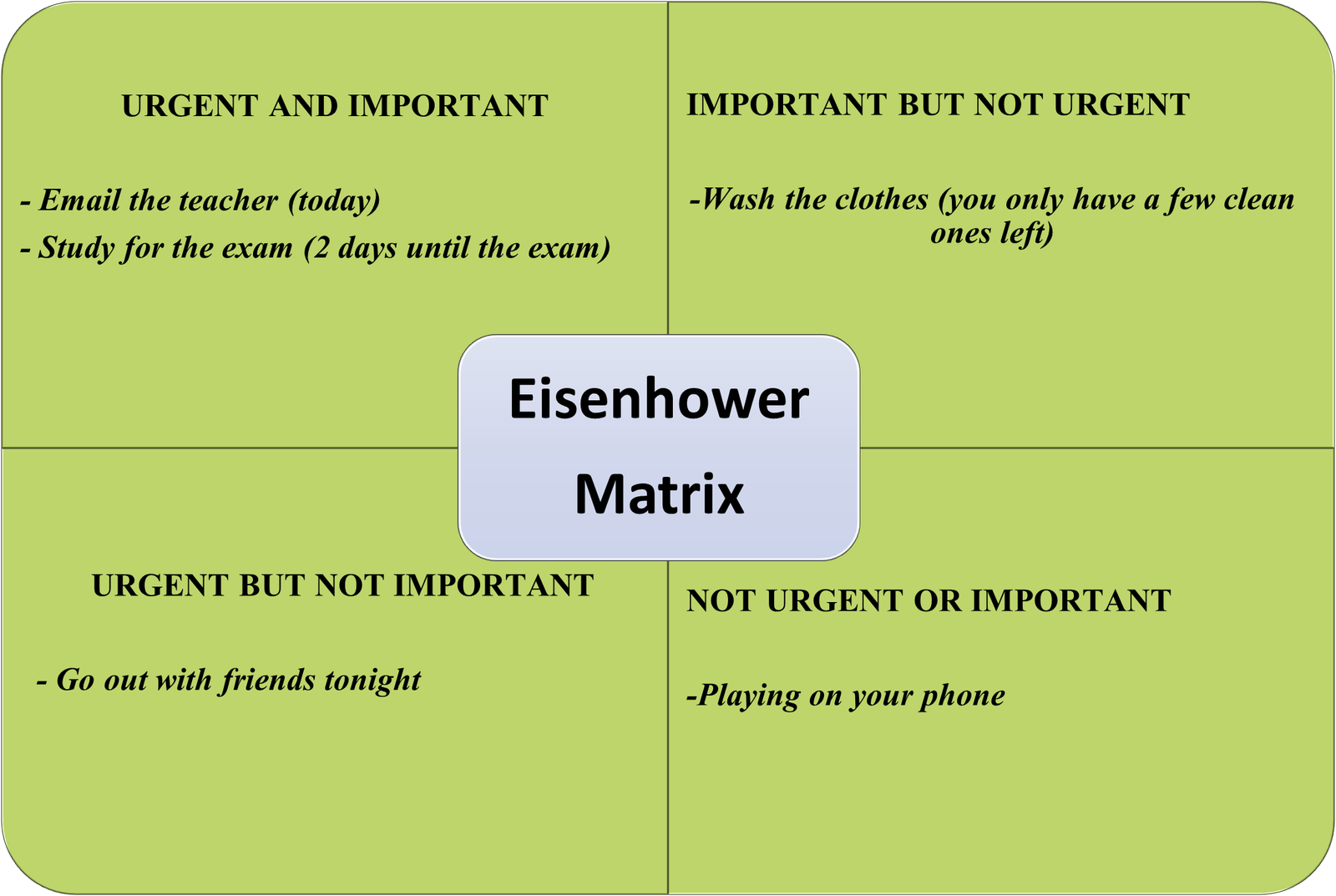
Other prioritisation methods such as the MoSCoW method, ABC technique and Pareto principle can be found the full workshop description.
MODULE 2
Sequence 1. Elaboration of the day's agenda
ACTIVITY
Presentation of the sequence structure and objectives (5 minutes). Discuss with the participants about the duration, structure of the sequence, objectives, and their involvement.
Daily agenda development activities (50 minutes):
1. Breaking the ice (10 minutes). Ask the participants to get involved in one of the following activities:
“A word that describes my agenda” – each participant says a word that reflects how they organize their day.
Example: the agenda is non-existent, summary, clear, organized, detailed, structured, loaded, concise, detailed, flexible, useful, etc.
- Ask an open-ended question: “How do you usually organize your day?”
- Invite participants to write down on a worksheet how they spend their time on a typical day.
Do not analyse what students write. The exercise is intended to introduce the students to the theme of this section.
2. Theoretical notions (10 minutes). It outlines the principles and importance of developing a daily agenda as a tool for achieving daily goals. This information can be found in the theoretical part of the chapter.
3. Practical activities (30 minutes).
- In the first phase, you lead practical activities with the young people before elaborating on the agenda. They aim to make participants aware of how they use their time: which activities last the longest, which are part of the daily routine, and how much time each of them consumes. Examples of this type of activity can be found in the specific section.
- In the second phase, the participants develop the outline of their agenda (with examples in the dedicated paragraph)
Suggestion. Select the activity/activities proposed below that you consider the most appropriate for the time available or that correspond to the particularities of the group you are working with.
Feedback (10 minutes). Talk to the group about what they learned.
- What was the hardest thing to plan?
- What changes would this approach bring to your daily life?
Home exercises. Encourage participants to solve the proposed activity/activities for home to understand and prove the effectiveness of using the agenda in achieving the objectives.
Phase 1. Practical activities before the development of the daily agenda
Self-assessment exercise: Divide the group into teams of 4-5 members. Each student writes down how they spend their time on a typical day and identifies strengths and challenges in their daily routine.
If you used activity c) from the moment of “breaking the ice”, ask the participants to reflect on what they wrote down at that moment.
Time diary: Participants write down their daily activities from the previous week to assess how they used their time. The exercise aims to identify patterns of time use and discover moments of maximum productivity and time-consuming activities.
Phase 2. Practical activities for developing the daily agenda
Step 1. Suggest that students write down the activities they must do for the next day.
Step 2. Students plan the day using time blocks following the model below.
A counsel for young participants
Use charts, colours, or symbols to differentiate the types of activities (e.g., work, breaks, self-time) to visualize the daily schedule clearly and manage the balance between different areas of life.
Step 3. Learners organize activities within each block of time using a prioritization method.
Tips for youth:
- The agenda does not have to be perfect but functional and realistic
- Review your agenda every night
- Be flexible, things can change
- Set realistic goals
- Check off each activity in the agenda. It will give you a sense of well-being.
Suggestions for youth workers:
- Encourage participants to find a suitable time to plan their next day (e.g., the evening before bed).
- Be flexible: Be prepared to adapt activities according to the level of involvement of the participants.
- Be a role model: Share your experience using your daily planner to create a real example.
- Encourage participation: Use open questions to stimulate discussion and sharing of ideas.
Template of a daily agenda for a student based on time-blocking
Template of the agenda of the day for a young employee based on time-blocking
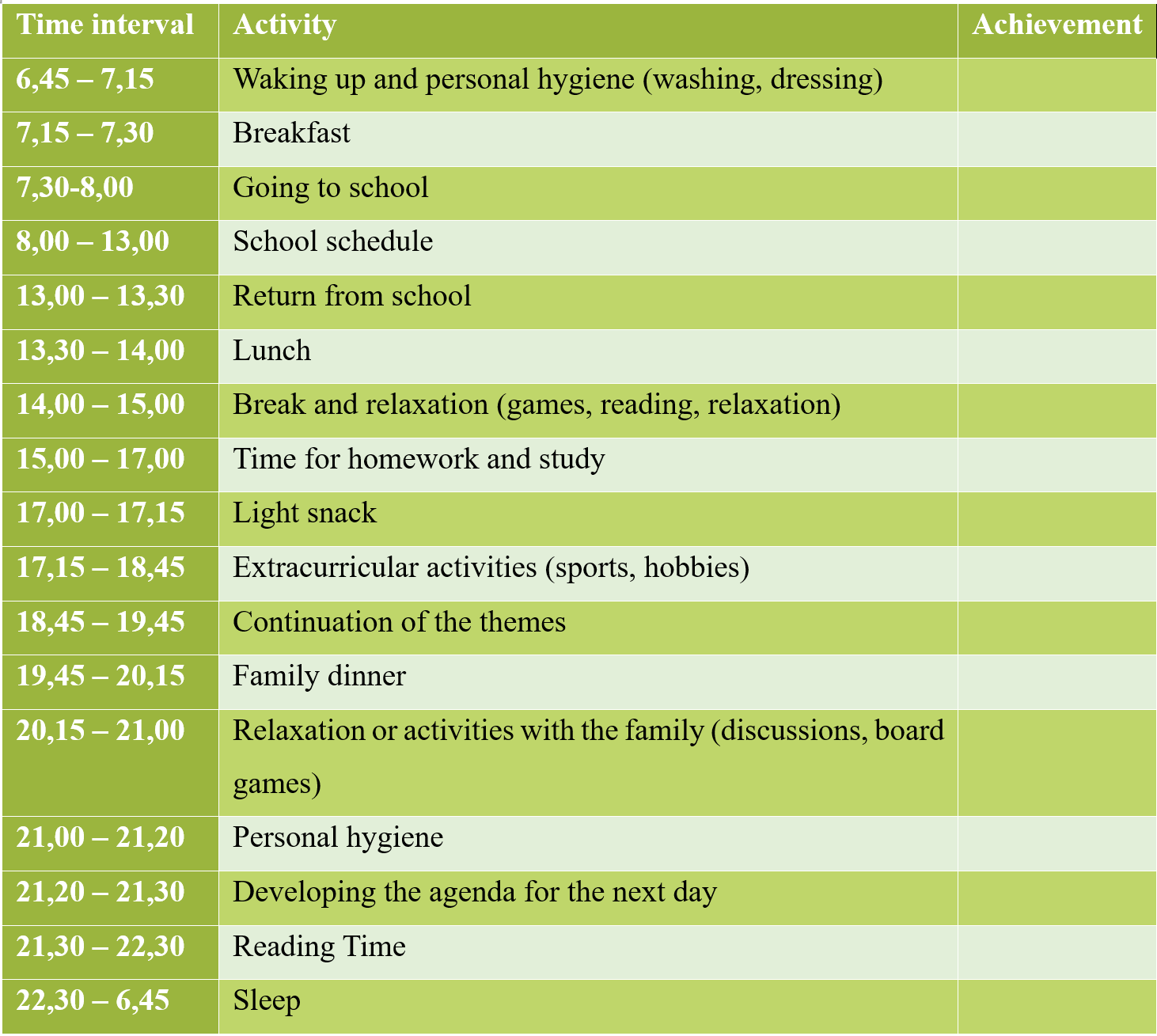
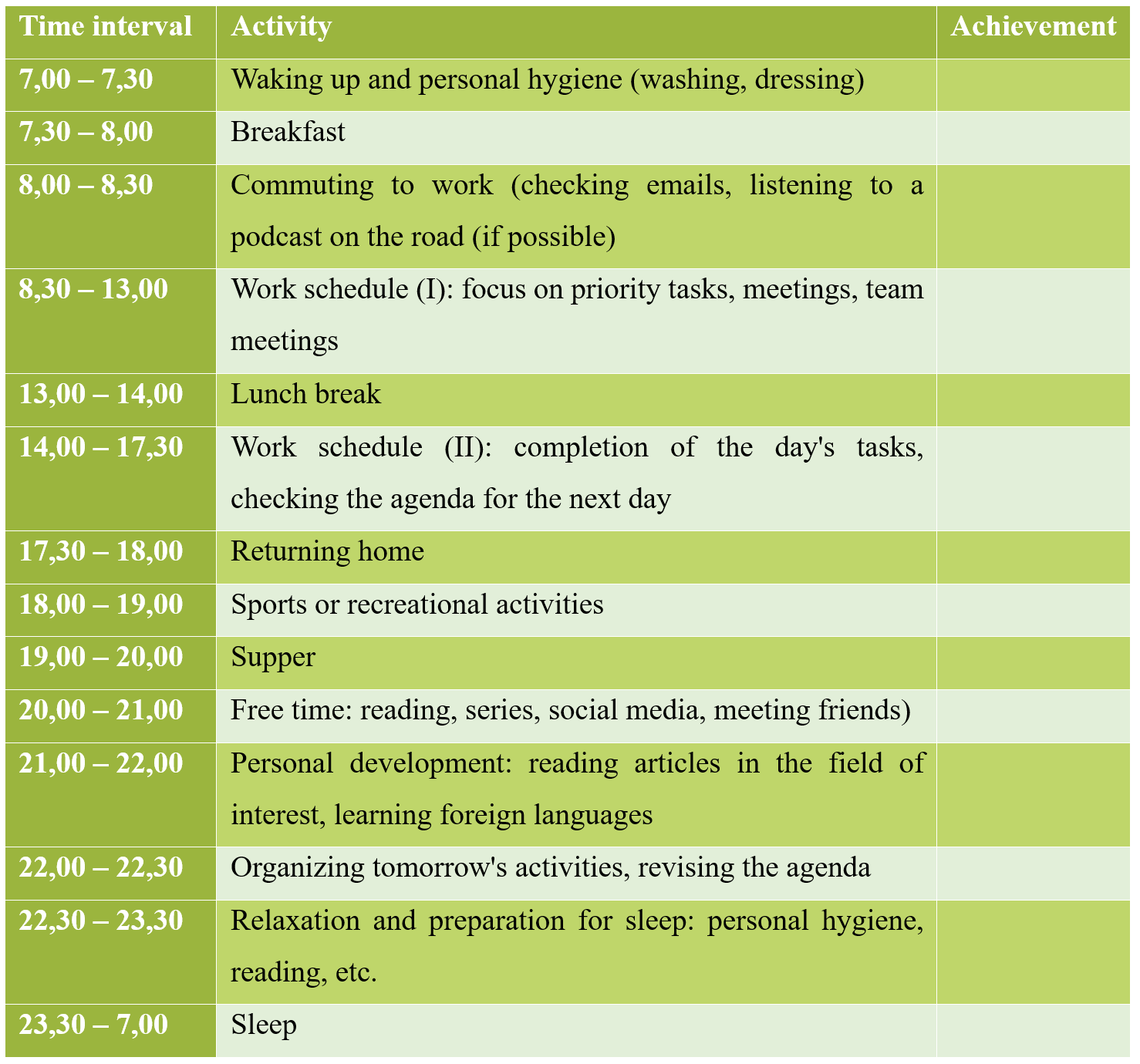
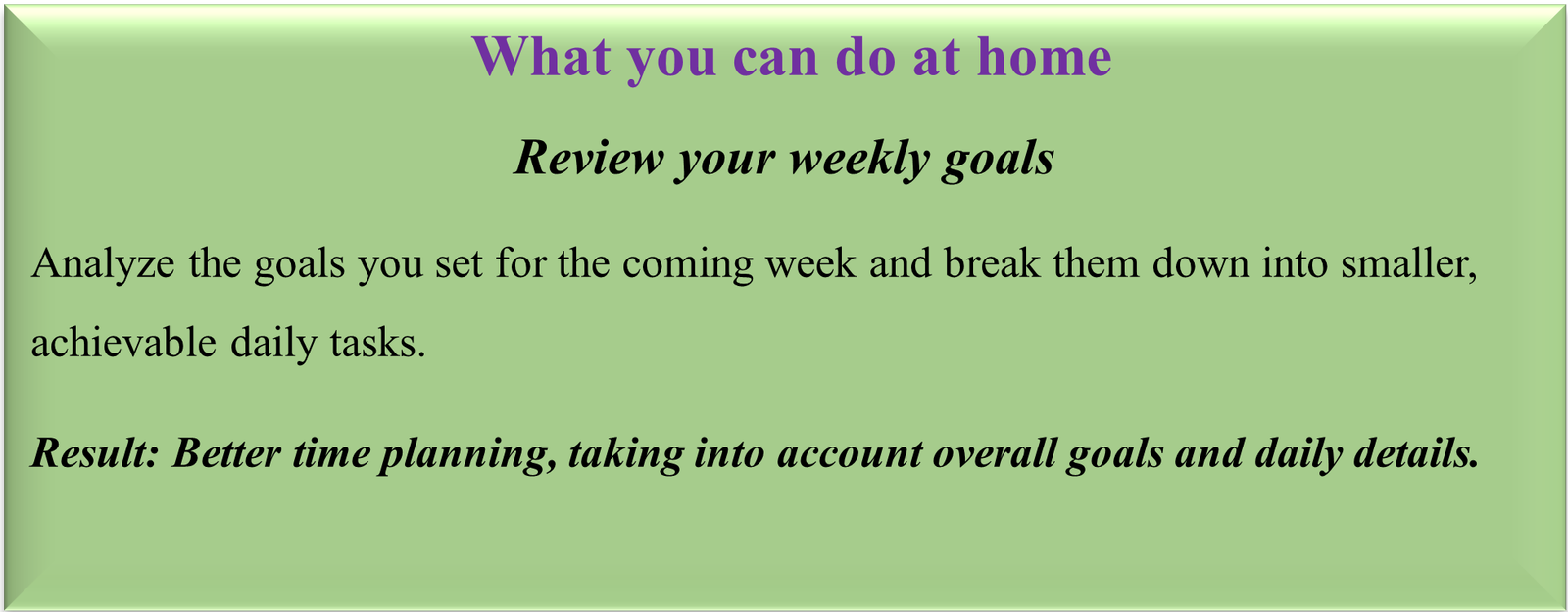
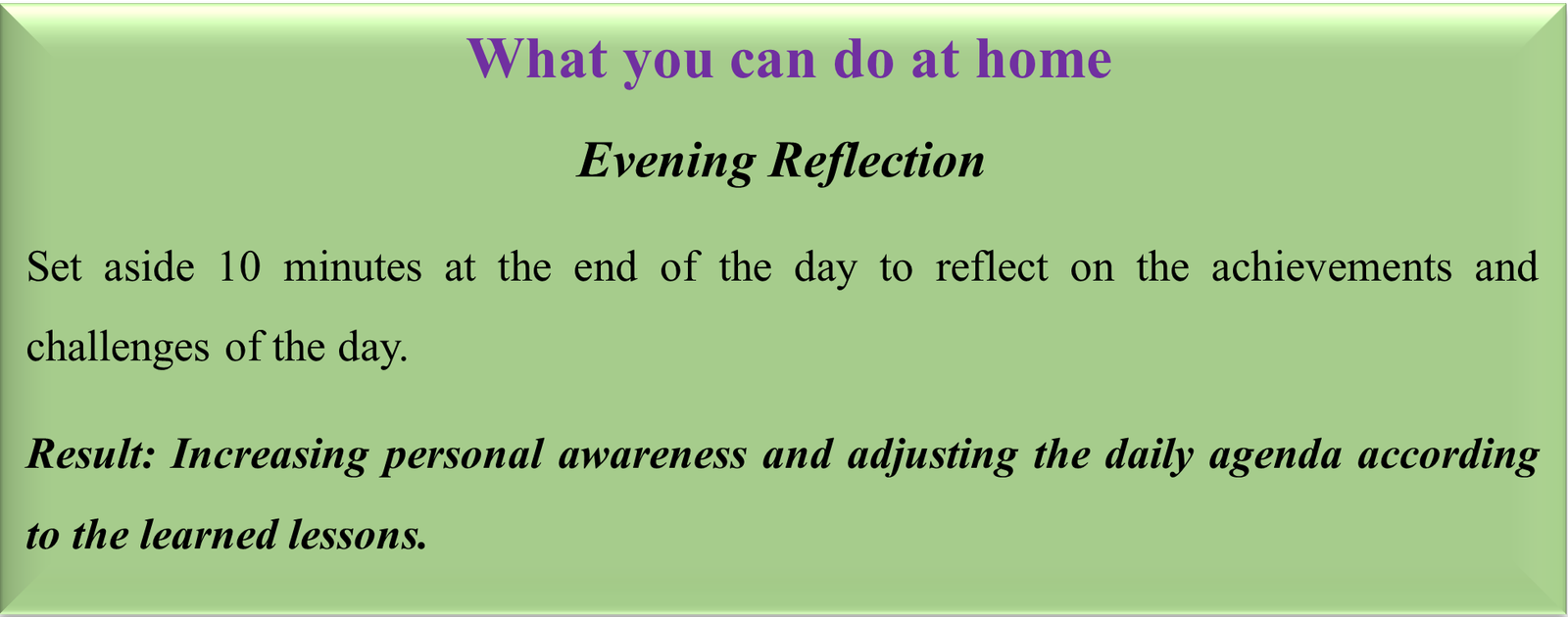

Sequence 2. Efficient use of working time
1. Presentation of the sequence structure and objectives (5 minutes). Discuss with the participants the duration, structure, goals, and their involvement.
2. Breaking the ice (5 minutes). This exercise invites participants to exemplify a recent activity in which they took part that lasted longer than necessary and to identify the causes for which the time was unduly extended (e.g., procrastination, lack of a clear deadline, distractions).
Example: Working on a project at the office, organizing an event, developing a school assignment, writing a report, etc.
3. Theoretical notions (10 minutes). Present to the students what it is, how to use it, what advantages it has to use the Pomodoro technique and/or counteract the Parkinson’s principle. The degree of detail is determined according to the time you have available.
4. Practical activities (45 minutes). Encourage participants to participate in the practical activities presented below to develop skills for efficient use of working time.
5. Feedback (5 minutes). A very good feedback method is “thumbs up / thumbs down.” This method is useful if you want to get quick feedback on an activity or idea without getting into long or detailed discussions.
6. Applications for home. Encourage participants to get involved in the home activities proposed to acquire the skills of efficient use of working time.
Practical activities with young people: Pomodoro technique
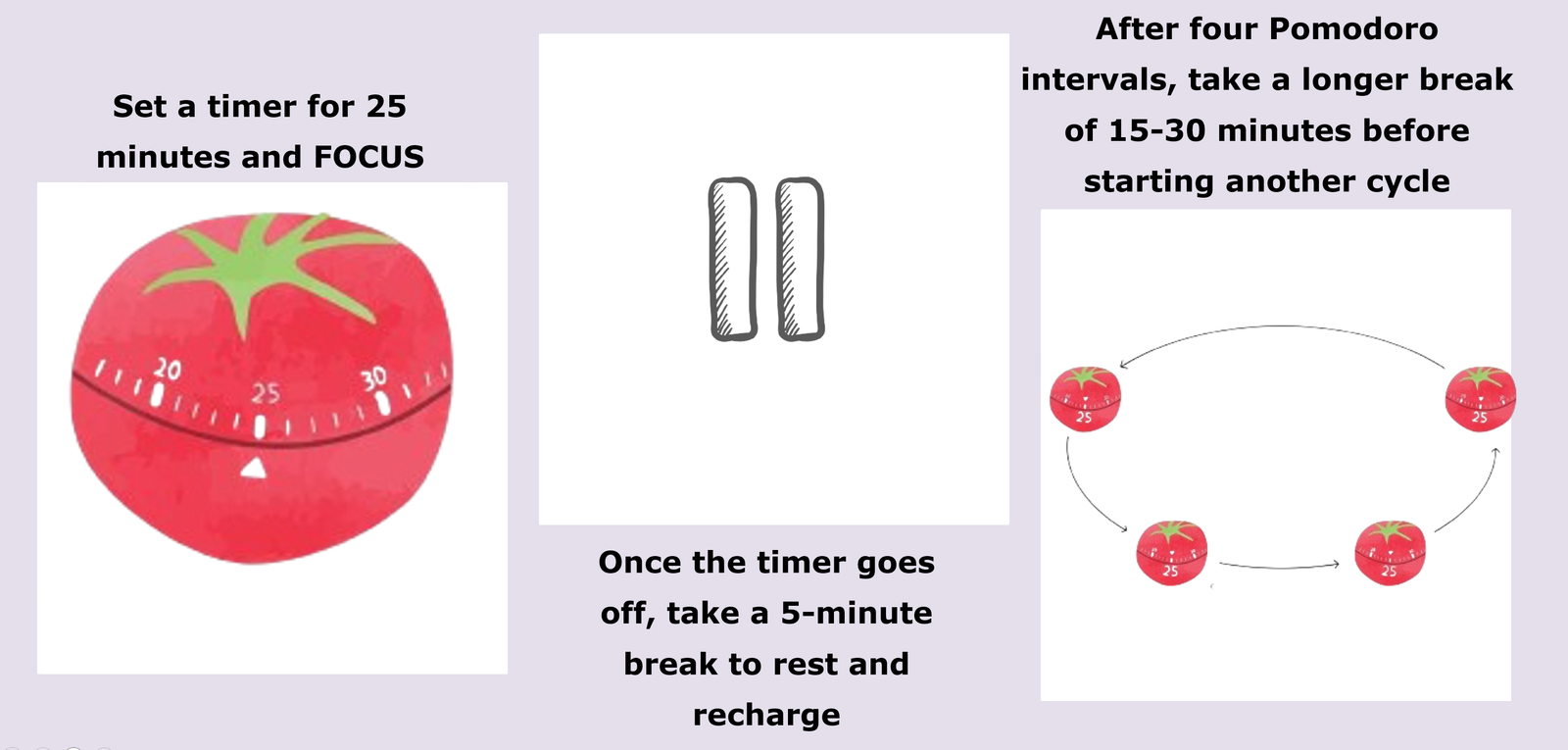
Using the Pomodoro Technique to streamline the time to complete task
“Pomodoro Story” (minimum 25 minutes, optimal 45-50 minutes). Divide the group into teams of 3-4 members. Each team receives a prompt or story theme (adventure, mystery, sci-fi, etc.). The members of each team collaborate and write a story.
You set the Pomodoro timer to 10 minutes, and the teams must work intensely to solve the task within the allotted time. After 10 minutes, the teams take a 3-minute break (they can discuss strategies or relax).
- First Pomodoro (10 minutes): Team members brainstorm ideas and sketch the story.
- Short break (2 minutes): Groups discuss their ideas informally or relax.
- Second Pomodoro (10 minutes): The teams write the beginning of the story.
- Short break (2 minutes): Teams relax.
- Third Pomodoro (10 minutes): Teams write the middle part of the story.
- Short break (2 minutes): Teams relax and prepare for the completion of the task.
- Fourth Pomodoro (10 minutes): Teams complete and revise the story.
- Long break (5 minutes): Team members relax and prepare for the presentation.
- Presentation and reflection. Each group presents its story of the entire workshop. Reflect on the challenges they faced and how they were overcome.
Suggestions for the youth worker:
- If the available time is very short, only two 10-minute sequences can be simulated with a 2 to 3-minute break between them.
- Pay attention to the group dynamics and ensure that everyone contributes. Encourage discussion about how it felt to work continuously for a period of time and the effects of short breaks.
Feedback:
- Have you understood dividing activities into short, focused work sessions followed by breaks?
- Have you understood the importance of respecting breaks to avoid fatigue and maintain constant productivity?
- How easy/difficult can you apply the Pomodoro technique in your activities?
- Do you like the idea of learning/working quickly and focused over a short period?
- Do you think the Pomodoro technique helps you improve your concentration and reduce procrastination?
- Are you ready to focus only on work, or will you be tempted to respond to messages, calls, or emails?
- Do you think you can stick to the 25-minute intervals strictly, especially for more complex tasks?
Practical activities with young people: Parkinson's Principle
Instructions:
1. Give participants a simple standard task:
- Writing a professional email.
- Planning a day or week of activities.
- Organizing a small project (e.g., a shopping list or travel plan).
If the time allows you, you can transmit complex tasks.
2. Time estimation. Before starting work, ask each student to estimate how much time they would typically spend completing their chosen task.
3. Reducing the time allotted. According to the estimate, ask the students to reduce this time by 50%. This stimulates the contraction of the time in which the task needs to be completed, forcing them to focus more and be more efficient.
4. Solving the task. Students begin to solve the task within the set time. Use a timer to track the time and announce the time remaining halfway through the interval to keep the time pressure on.
5. Reflection and feedback After the time is up, challenge students to share how they met the new deadline. Reflection questions:
- Did you manage to finish the task in the short time?
- Have you been able to set stricter deadlines for your assignments?
- Did you rely on previous experience to assess the actual duration of the tasks?
- How did it feel to work under greater time pressure?
- What changes have you made to be more efficient (simplification, eliminating unnecessary steps, reducing distractions)?
- Discuss with participants how they can apply this method in their daily lives, reducing the time they spend on tasks to avoid procrastination.
Variants of the exercise
Competition: You can divide participants into teams and challenge them to complete a task in a shorter time than the other team.